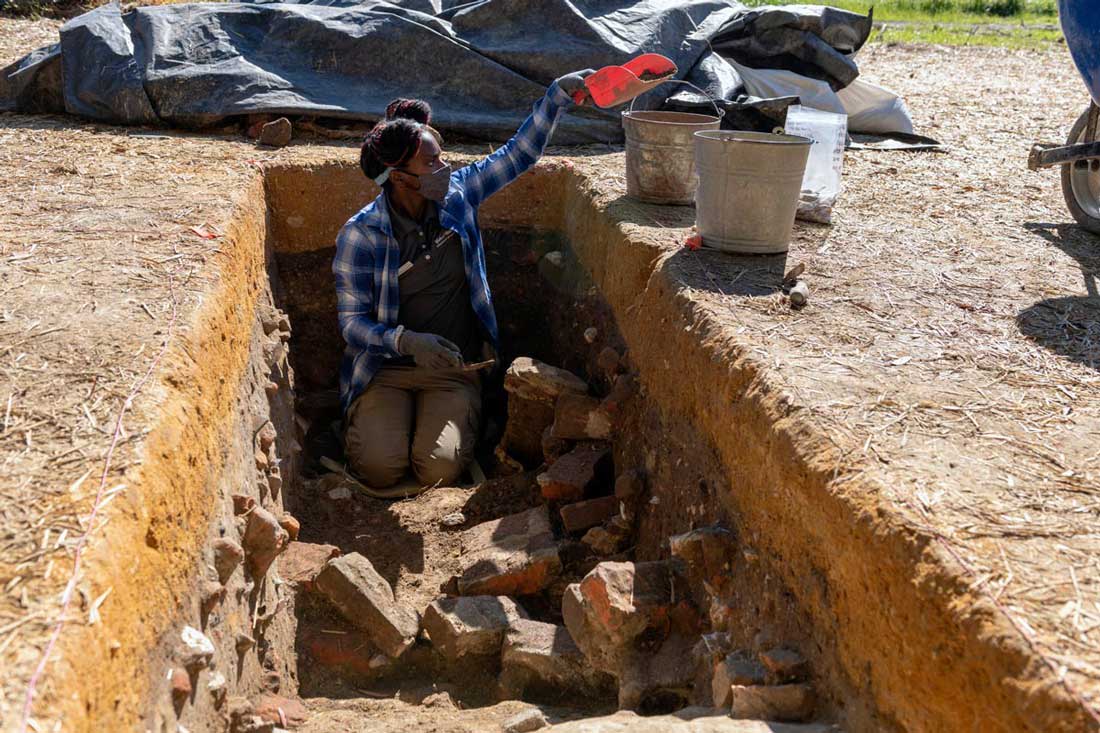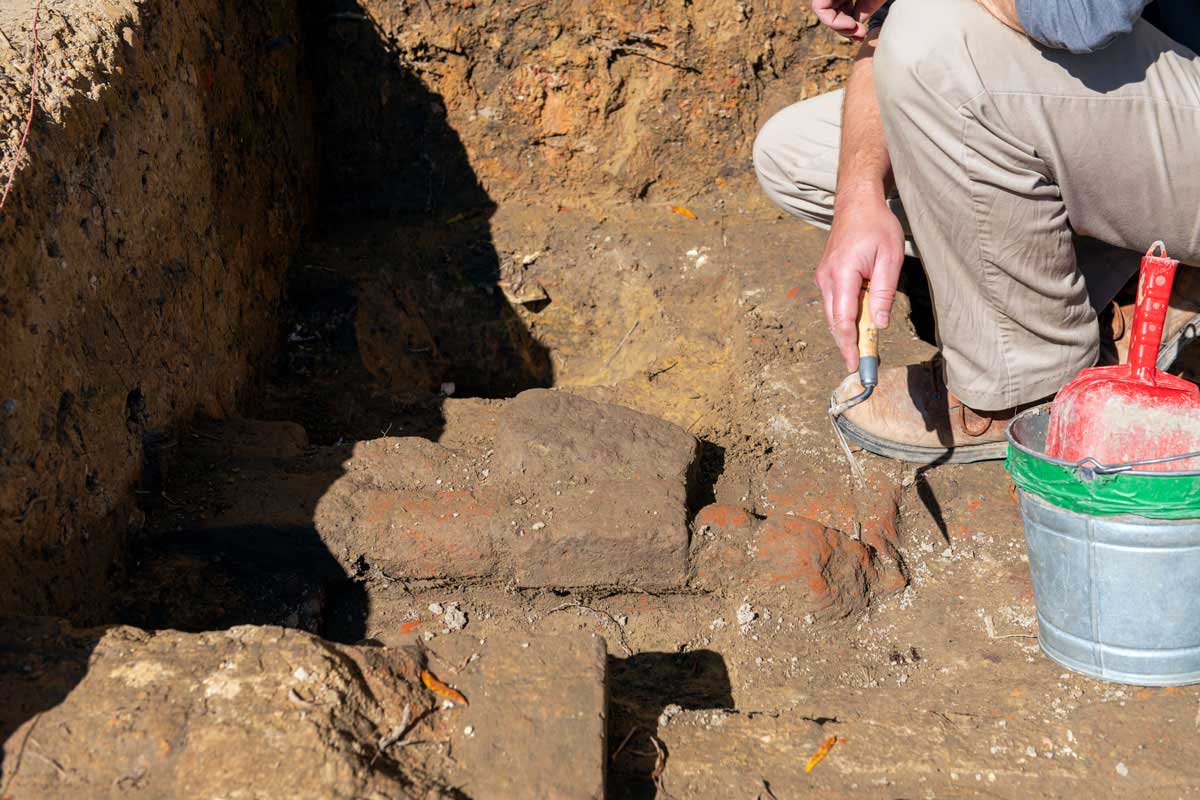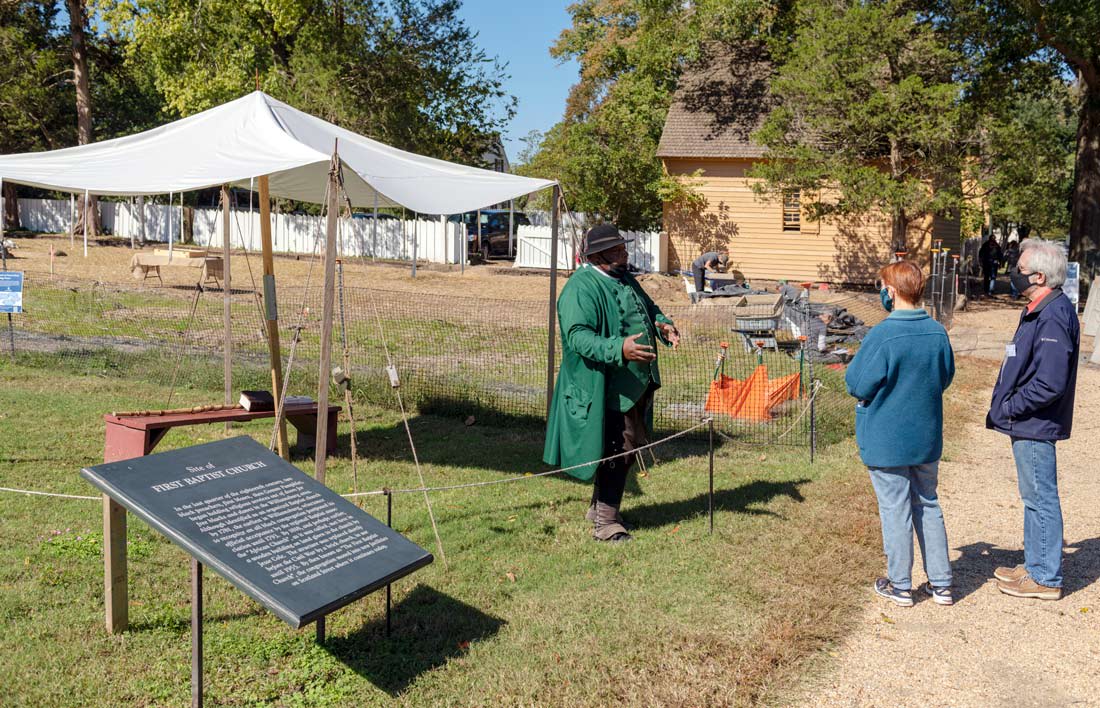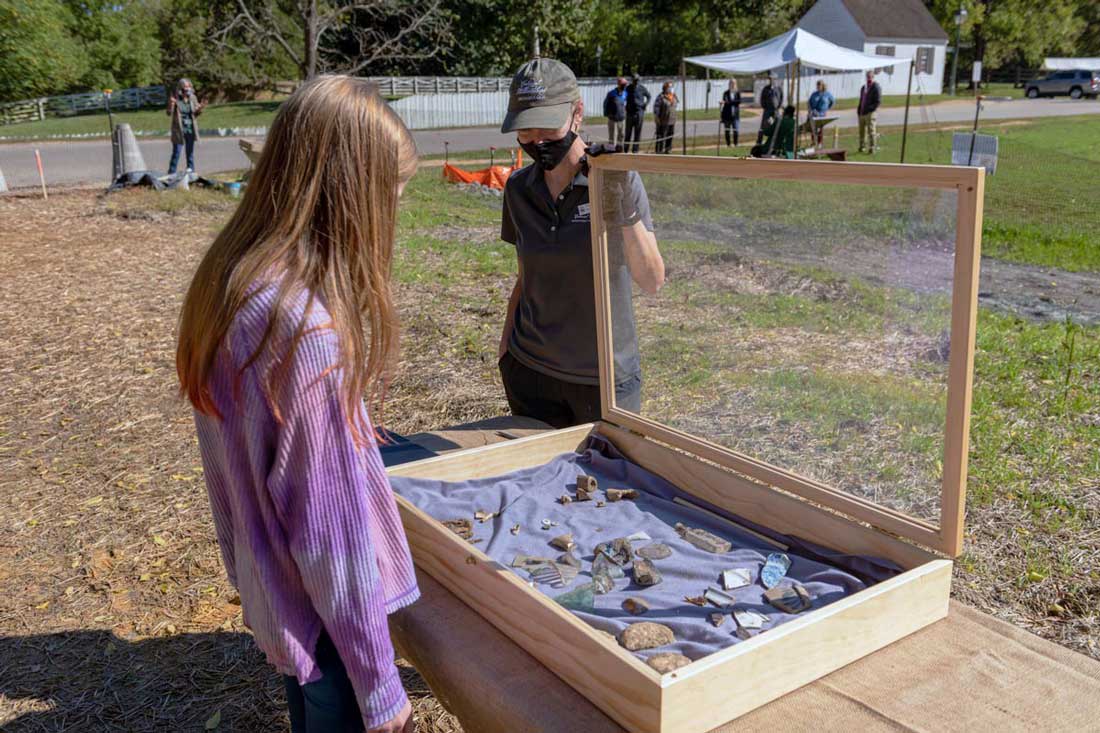Our exploratory excavations at the Nassau Street site of the First Baptist Church are coming to a close for now, but we are thrilled to share that we are headed into to an expanded, 18-month excavation of the site in January!
Since early September, our archaeology teams have been hard at work, looking for any intact archaeological evidence of the 1850s church and the earlier “Baptist meeting house” said to have been located on the same lot.

We were a little worried that a parking lot that had been constructed on top of the entire site might have damaged the remains of any early structures underneath. Luckily, we found that the parking lot hadn’t harmed anything below ground. While our first phase was limited in scope, our excavation units revealed layers of soil that were full of 18th- and 19th-century artifacts, proved that the foundations of the church were still there waiting to be uncovered, and even revealed the presence of at least one burial.

During our investigations, we re-located the foundations of the brick church built in the 1850s. We also discovered the remains of a foundation associated with an earlier building. We don’t know yet if the earlier foundation was the first First Baptist Church erected in the early 19th century and referred to as the “Baptist meeting house” in 1818, but it’s a good sign that the construction of the 1850s church did not destroy all evidence of earlier buildings on the lot.

The discovery of a burial at the site should come as no surprise. Church documentation from the 1950s records a member of the congregation relating that one of her relatives was buried on the property. During our excavation only the disturbance in the soil where the grave was dug was exposed, keeping the remains themselves safe. It is unclear how many more graves may be on the site, a question to be answered during our next phase of excavation.
As many of you know, our work is being conducted in partnership with the First Baptist Church congregation and descendent community, along with the Let Freedom Ring Foundation. As we uncovered evidence of early use of the property, we were excited to share all the things that we had found with the entire First Baptist community, particularly the discovery of a burial, which was revealed to descendants before any public statements were issued. At two open house events at the site itself, members of the First Baptist Church were invited behind the fence to take a look at some of the artifacts we had found while sifting through soil at the site.

The broken bottles and plates, as well as the oyster shells and animal bones, provide evidence of what the congregation members may have eaten and drunk when they gathered at the church together.

One particularly interesting find was a piece of a decorative lantern-glass which likely covered one of the lanterns used to light the church, providing us a little bit of information about the furnishings used in the building in the 1800s. We also found several objects that may have been lost by members of the congregation over 100 years ago, including a doll’s foot, several buttons, and an unusual 3-cent coin, called a trime, which was only made from 1851 to 1873. Each of these small, broken objects helps us understand a little bit more about the lives of the people who attended the church.

Based on what we’ve found so far, we know that this site has much more to teach us about the history of the First Baptist Church and the history of our country. Knowing that there’s a lot more to find and share, we’re super excited to know that we’ll be back in January for another 18 months of excavation at the Nassau Street First Baptist Church site. We are thrilled to continue our partnership with the First Baptist community as we work to fully understand and commemorate this important piece of our nation’s history.
Eric Schweickart is a Staff Archaeologist with the Colonial Williamsburg Foundation. Eric has an MA in Historical Archaeology from the University of Leicester and a PhD in Anthropology from the University of Tennessee, Knoxville. His research focuses on consumerism and household economics in the North Atlantic in the 17th, 18th, and 19th centuries. Eric has excavated archaeological sites across the southeastern U.S. over the last decade, including Sapelo Island, Georgia, the Montpelier Plantation in the Virginia Piedmont, and the Coan Hall site on the Northern Neck of Virginia.
Colonial Williamsburg is the largest living history museum in the world. Witness history brought to life on the charming streets of the colonial capital, plus, explore our newly expanded and updated Art Museums of Colonial Williamsburg featuring the nation’s premier folk art collection, plus the best in British and American fine and decorative arts from 1670–1840. Check out sales and special offers to plan your visit.
